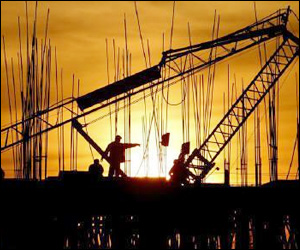A Rs 30,000-cr burden on govt
 The proposed widening of the poverty basket from 28 per cent to 38 per cent could mean the Central government will have to spend an additional Rs 30,000 crore on poverty alleviation programmes.
The proposed widening of the poverty basket from 28 per cent to 38 per cent could mean the Central government will have to spend an additional Rs 30,000 crore on poverty alleviation programmes.
It is less than 10 per cent of India’s budget for 2009-10 which was Rs 3,25,000 crore (Rs 3,250 billion).
In its interim report, the Suresh Tendulkar Committee has projected that 38 per cent of Indians are poor, 10 per cent more than the existing figure. The methodology adopted by the committee puts rural poverty as 46 per cent. Earlier, it was 30 per cent. The committee also puts the urban poverty rate at 28 per cent. Earlier, it was 26 per cent.
Once the Tendulkar committee submits its report in November, the government would possibly constitute a group to examine the recommendations, before accepting or rejecting it. “The entire process may take a few months,” said a senior Planning Commission official, who was not willing to be quoted, as he was not authorised to speak to the media.
The Central government has spent Rs 1,51,460 crore in the last four years for poor under just three major anti-poverty schemes — Targetted Public Distribution System, Indira Awaas Yojana and Swarnjayanti Gram Swarozgar Yojana (for details see box).
Higher poverty levels would mean higher food subsidy bill.
A Group of Ministers, which has examined the Tendulkar’s interim recommendations in August, had estimated that additional Rs 9,000 crore would be required to provide food grains under the Public Distribution System (PDS) at the March prices of food grains. This projection was based on the presumption that 35 kilogram of food grains will be provided to additional 1.80 crore poor households estimated by the Tendulkar Committee.
For each kilogram of rice given to a BPL family, the government provides a subsidy of Rs 13.28 and in case of wheat it is Rs 10.89. “Per kilogram subsidy for wheat and rice will increase with domestic and international prices of food grains rising by about 30 per cent in the last six month,” the official said.
Apart from food, senior government officials said higher poverty head count could impact investments in health, housing and sanitation, the areas which Tendulkar has considered to arrive at the 38 per cent figure.
“Half of Indian villages still don’t get clean drinking water and doesn't have basic health facilities,” said Devender Sharma, a Delhi-based civil rights campaigner. “The government would need to invest Rs 10,000 to Rs 15,000 crore annually in addition to existing budget, if it wants to provide these basic facilities in the next three years.”
An area, where the government will not be required to huge additional investment is school education. “Only in primary school education the committee recommendations will not have a major impact as already over 90 per cent of habitations in India have schools within one-km distance, which Tendulkar has said as basic education requirement,” the official said.
Officials said, more than money, there has to be a will for sincere implementation of the government schemes for the poor.